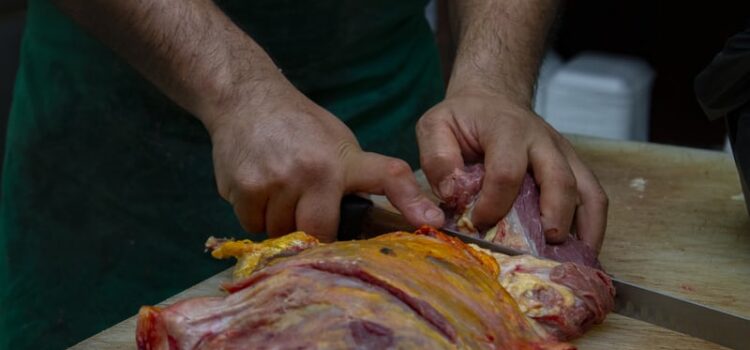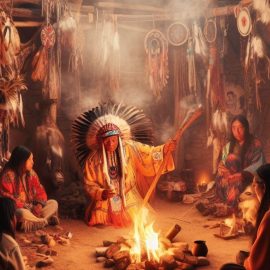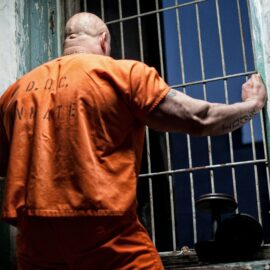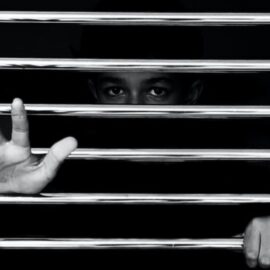

This article is an excerpt from the Shortform book guide to "Fast Food Nation" by Eric Schlosser. Shortform has the world's best summaries and analyses of books you should be reading.
Like this article? Sign up for a free trial here .
What dangers do meat packing workers face? Why is this job so dangerous?
After over a hundred years since the publication of The Jungle, meat packing workers still struggle with poor working conditions. Meat packing workers are unsafe, underpaid, and exploited.
Read more about meat packing workers and the struggles they face—including death on the job.
Meat Packing Workers: The Jungle, Redux
In 1906, Upton Sinclair wrote The Jungle, which shocked the conscience (and turned the stomach) of the nation by exposing audiences to the dangerous and unsanitary conditions in America’s slaughterhouses and meatpacking plants. Scenes that depicted tubercular hogs being led to slaughter and workers being maimed and killed on the job (and then packed into sausages) revolted and outraged readers at the dawn of the 20th century. The novel inspired the creation of the Food and Drug Administration, which was tasked with ensuring nationwide food-safety standards.
If Upton Sinclair were alive today, he would be aghast at conditions in today’s meatpacking industry and marvel at how little has changed. The meat you see at your local supermarket (or in your Big Mac) gives little hint of the gruesome and dangerous process behind how it got there.
Walking Through Blood
Truly disturbing scenes await those who visit a slaughterhouse—or the workers who toil in them. Decapitated cattle carcasses. Organs yanked out of dead animals with bare hands. Ankle-deep pools of blood. Meat packing workers severing the carotid arteries of dead cows. All of this is just part of the scenery on a typical business day in America’s meatpacking industry. And this is just what’s at the end of the line, after the cattle have already been killed. The scenery becomes even more violent as one goes further up the production line, where workers interact with live cattle.
As cattle enter the slaughterhouse from the pen, they are greeted by a worker known as the “knocker,” who shoots them in the head with a stun gun that knocks them unconscious. This individual’s job is simply to shoot cattle in the head like this as they are herded into the slaughterhouse through a narrow shoot. After they’re knocked out, the animals are shackled to a chain and lifted through the air to the next area of the factory, where they are killed and dismembered.
(Shortform note: The scenes at these facilities are so gruesome and heartrending that the meatpacking industry has gone to extraordinary lengths to prevent the public from seeing what goes on inside them. “Ag-gag” laws make it illegal to film or photograph activities at factory farms or meatpacking plants without the explicit consent of the owner—with the goal of silencing or intimidating activists who are trying to shine a light on animal abuses. These laws are on the books in Arkansas, Idaho, Iowa, Kansas, North Carolina, and Utah. Check out this New York Times article to learn more.)
Death and Injury on the Job
Meatpacking is one of the most dangerous occupations in America, with about one in three workers in the industry suffering an on-the-job injury. And these are only the official numbers published by the Bureau of Labor Statistics. Independent studies estimate that the real rate of injury is far higher, with many incidents going unreported.
Meat packing workers are routinely lacerated, struck by swinging cattle carcasses, or subjected to carpal tunnel syndrome due to the repetitive physical motions that their jobs demand. The rate of injury is 35 times higher than the national average. This is exacerbated by the speed of the assembly line, as well as the low skills and poor training of the workers (all outgrowths of the IBP assembly-line revolution in meatpacking). The faster production goes, the more injuries occur, as the propensity for accidentally stabbing oneself (or one’s coworkers) with a knife increases. And with the demands of the fast food industry, there is always an emphasis on speed and mass production over quality and worker safety. Many workers resort to abusing methamphetamines and other drugs to stay alert and keep up the pace, which, of course, only contributes to the injury rate.
The nature of the workforce itself also contributes to the problem. Composed largely of recent immigrants (many of whom are undocumented), they can be easily fired and replaced at will, making it a big risk for any individual worker to speak out about the hazardous conditions. Without unions, they have no authority at the plant looking out for their interests. Their language barriers and uncertain legal status also render them extremely reluctant to call attention to themselves by advocating for their interests. All of this makes for a workforce that is powerless, easily manipulated, cheap, and highly obedient to the demands of management.
The late-night cleaning crews come in for perhaps the worst treatment of all. They are tasked with cleaning up the blood and entrails that are left over after a typical day’s work at the plant, during which 3-4,000 cattle might have been slaughtered, each weighing about 1,000 pounds. The clean-up crew uses high-pressure hoses that shoot hot water and chlorine, which creates a fog that severely reduces visibility. Walking through the plant in this semi-blind state, cleaning crew workers suffer gruesome injuries and even death. Meat packing workers have been beheaded, dismembered by conveyor belts, fallen from great heights, crushed to death, and even drowned in blood-collection tanks.

———End of Preview———
Like what you just read? Read the rest of the world's best book summary and analysis of Eric Schlosser's "Fast Food Nation" at Shortform .
Here's what you'll find in our full Fast Food Nation summary :
- How the fast food industry reshaped the American economy
- How fast food marketing is manipulating you
- Why the rise of fast food has destroyed family farms across America






